We are always striving to become better artists. Condensing this big subject into a top 10 list was no easy task! In a nutshell, I am sharing ways to improve your art that have taken me a lifetime to compile, learn and execute…and I am still learning and growing.
Below are my Top 10 Ways to Improve Your Art. These principles can be applied toward many different artistic genres including realistic painting, abstract painting, photography, weaving, crafting, design and more.
I hope this list is helpful to you. ~Lori
Lori’s Top 10 Ways to Improve Your Art
1. Create an Inspirational Work Environment
This may seem obvious, but we are a product of our environment. Therefore, if your environment is dark, cluttered, dusty, cramped or messy, how can you create and improve your art? You cannot perform and create at your best when you are uncomfortable and ill at-ease.
Clean, organize and unclutter your creative environment at the end of each workday so you are ready to focus on your art. Wash your paintbrushes; organize loose papers, books and other materials. This goes a long way toward improving your creativity, efficiency and art.
Use good lighting. The type of lighting and its intensity, color and direction all affect an artist’s visual performance. What you want is a lamp that gives “natural light” and imitates natural north light.
2. Have a Concept in Mind Before You Begin
All expressions of art begin with a concept. A concept is an idea formed in the mind, which will help the artist express how something will be accomplished. In order to improve your art, it is best to have a concept etched in your mind or in a sketchbook before you begin. An artist without a concept is like a traveler without a roadmap.

That does not mean that you have to be rigid in your creating. You can allow for artistic inspiration to guide you, but by keeping that concept in mind it will help you achieve your artistic desires.
“The most important ally in the study of painting is the art of thinking,” stated Edgar Payne, famed artist and author. This can be applied toward any form of art.
3. Composition
This is such a complicated and important subject that is seems daunting to condense it down into a bullet point! But, I will give it a try…
The word composition literally means ‘putting together’ using a conscious thought that can be applied toward any work of art. The composition of your art is the arrangement and placement of visual elements. There are numerous compositional techniques to help you achieve unity and aesthetically pleasing artwork. That said, some artists such as Salvador Dali and Pablo Picasso chose to ignore traditional compositional approaches to challenge the viewer!
Here is one timeless tool, not necessarily rule, to help you develop pleasing compositions for your art and design.
The rule of thirds is often overlooked by amateur artists and forgotten by many art teachers. Interestingly, it is one of the most important rules that a novice photographer learns about in photography class! This ‘rule’ or guideline is commonly used in the visual arts community today including painting, photography and design. Using it will help improve the design of your art.
Divide your rectangle into nine equal parts and it creates four points where the lines intersect. Placing objects in these intersections creates a focal point and a pleasing composition.
4. Learn to See the Negative Shapes or Space
As humans, we are so conditioned to focus on the object in front of us. As artists, it is important to see the spaces between and around the objects. These spaces are important and hold relative location and proportions that do not exist in the objects themselves. Learning to see and draw the shapes between the lines that make up an object with help you correctly render your subject.
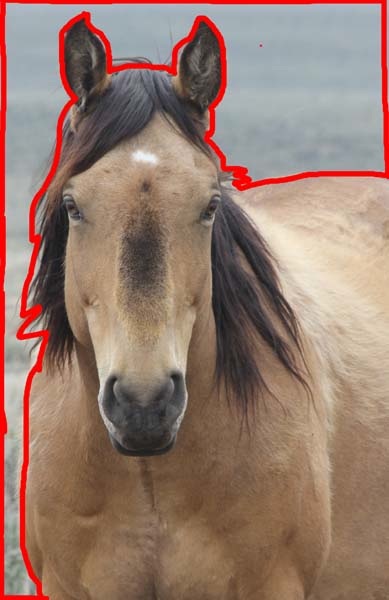
You can see in the photo the negative shape or space around the horse. Teaching yourself to see the negative shapes/space will help you accurately draw the horse without trying to render the horse. This way, you are drawing what you see and not what you know.
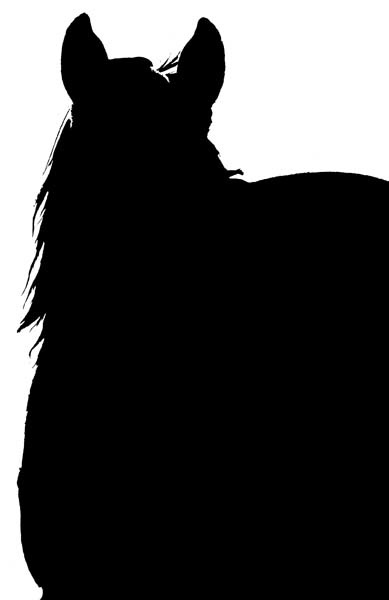
5. Understand the Color Wheel
There are 3 Primary Colors:
• RED
• YELLOW
• BLUE
There 3 Secondary Colors made by mixing the primary colors together:
• RED + YELLOW =ORANGE
• YELLOW + BLUE = GREEN
• RED + BLUE = VIOLET

There are 6 Tertiary Colors made by mixing two secondary colors together:
Complementary colors have a strong visual impact when placed alongside another. Complementary colors are directly opposite each other on the color wheel.
• RED + GREEN
• BLUE + ORANGE
• YELLOW + VIOLET
Harmonious colors rest alongside each other in the color wheel. For years, artists, designers, and interior decorators have been using color to enhance our environments. Color can be used to evoke a certain mood or to create a message or sharp response in the viewer. Understanding color will dramatically improve and add interest to your art.
6.Understand Cool and Warm Colors
Facts about Cool colors
Cool colors based on blue undertones bring to mind a calming effect. These colors range from cold icy blues to warm and nurturing Mediterranean turquoises. Many decorators use these colors in spas, bathrooms and other quiet environments. Blues lower heart rate and reduces appetite. Blue represents dependability. It is commonly worn in uniforms and business suits. Dark blue is generally used by more authoritative figures including police officers and our Presidents!
Blue and greens are used in advertising medicines and health care products. ‘Greenrooms’ of theaters are so called because their green walls are often used to steady the nerves of actors. Dark greens do well in offices and studies. Greens are commonly used for outdoor products.
Facts about Warm colors
Warm colors are based on yellow undertones and tend to convey emotions ranging from happiness to violence. Red, orange and yellow colors trigger hunger. This is why you see restaurants like McDonalds, Wendy’s and Burger King using these colors in their logos and advertising. Safeway, Walgreens and Costco all use red in their logos. Red instantly attracts, makes people excited and increases the heart rate. Just think of Coke and Red Bull!
7. Learn to See Value
Value otherwise known as tone, is how light or dark that color is. For example: If you took a black and white photograph of your painting, the shades of grey would be the different value or tone within the painting.

Believe it or not, value is more important than color to the design and success of a painting. Value is used to create a focal point within a painting or drawing because the human eye is immediately drawn to a light element against a dark element. This creates, the focal point of interest. To create the illusion of depth, gradations of value are also used. Areas of light and dark give a three-dimensional illusion of form to subject matter.
8. Keep it Simple
Paintings or images with too much information clutter and distract the viewer and make it difficult to identify the subject. Most strong works of art edit the extraneous content, which allows the viewer to focus on the primary objects.
9. Use Rhythm
Rhythm in art is created whenever movements flow into a repeated pattern. Rhythmic patterns can be found in photography, glass art, ceramics, sculpture, realism, abstract art and more. Rhythm can strategically be used to move the viewer’s eye throughout the work of art. Color patterns, light patterns, texture and application of paint can all be used to create and convey rhythm and energy to the art. I find that listening to music while I create helps me express rhythm. My paint brushes dance across my canvas!
10. Determination
Dedication, determination and a desire to improve are important factors to the success of any artist. Each artist progresses at his or her own pace. Be patient with yourself and celebrate your artistic improvements and achievements.
One of the things that I love most about “Art” is that it is an activity we can improve upon with age, unlike many other enjoyable things we experience in our youth. As long as we have our faculties, determination and the desire to improve our art we can continue to excel and grow as artists.
I hope these art tips will help your continued growth as an artist. ~Lori
(A while back, I had the honor of writing a special Expert Series post for Tony Hastings very popular blog, The Top 10 Blog. Tony asked me to write about my favorite subject, art. You might also like to check out another post I wrote for Tony, Top 10 Ways to Improve Your Twitter Image and Following….and you might enjoy, The Top 10 Blog Interview with Lori McNee)
(Let’s meet on Twitter, Facebook and now on Google Plus! http://gplus.to/lorimcnee )
*****
Here are a few more helpful posts:
10 Tips to Find Your Own Artistic Voice
Should Artists Have Their Own Blogs?
3 Steps to Find Art Gallery Representation
Focus and Plan to Paint
10 Tips to Handle a Creative Disaster
How Do You Define Success as an Artist?
Use the Hidden Meaning of Color to Improve Paintings
Creating Art in Small Studios
One Simple and Effective Way to Show the World You are a Pro


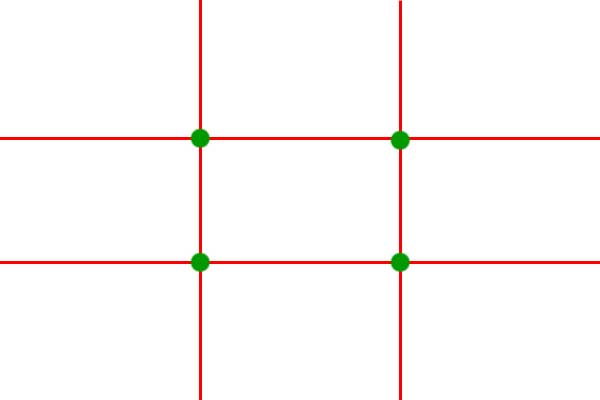
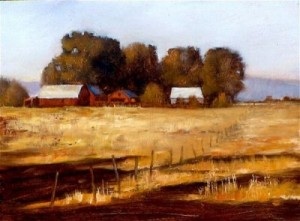
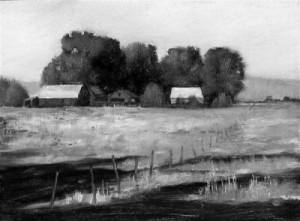
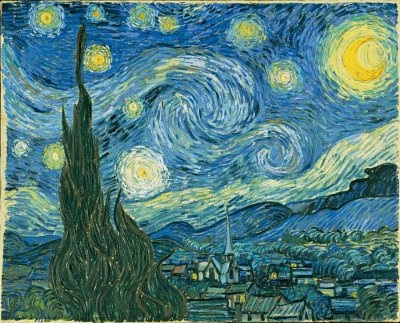






I’ve enjoyed reading your blog and this this is nice summary – thanks for sharing your experience Lori! Many people don’t seem to realize that some artists plan before they start and some benefit from working in an organized environment.
For number 11. I would add: designing with variation in size, shape, texture, color etc to make the artwork more appealing.
That is a great addition, David. Thanks for contributing a great comment. I noticed that I had forgotten to add the #10 to the post…a reader pointed it out earlier. Anyway, thanks for #11.
Best-
Lori
Another great post. Thanks for breaking it down and making it all sound easier.
Excellent post, I think work environment is so important and with that in mind I will de-clutter my studio today.
Thank you for the good information! Someone told me about this little trick for seeing value
in your paintings. If you hold up a piece of red plastic in front of your face and look at your painting through it, it will show you value instead of color. It works really well and helps you see if your values are strong. I got mine at Tap Plastic. I just used it this morning!
Kathleen, I have never heard of that tip before! Thanks so much for sharing…I will try it and let you know how it works for me.
Best-
Lori
Another wonderful post full of great information Lori! Thank you!
Thanks Colleen, it was a fun one to write.
Best-
Lori
Lori,
I really enjoyed your tips, and I’ve been working on a painting based on a picture that was taken when I was a child. It is really important to me and I really want to make it look good, would it be possible to get feed back if I were to show you the painting so far?
Thanks
Krystal
🙂 ;(
Hi Lori,
Thanks much for the great tips! I loved to read them all. I must admit that for me right now the hardest thing is to find time and energy during my busy days to paint or draw on regular basis. I think having a good inspirational work space helps a lot in this case – makes it easier to dive into the creative process at the end of the day or in short spaces of time whenever they occur 🙂
I always enjoy your posts!
Thanks and have a lovely weekend,
Radka
Thank you for being so generous with your knowledge. You were terrific and very dynamic on stage at Convention! I have the video and there is a lot in there to absorb. Again, just wanted to convey my thanks.
Lona
Thank you, I’m happy you enjoyed it!